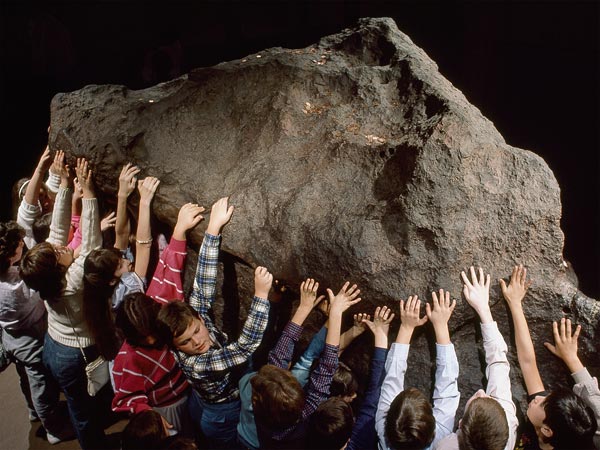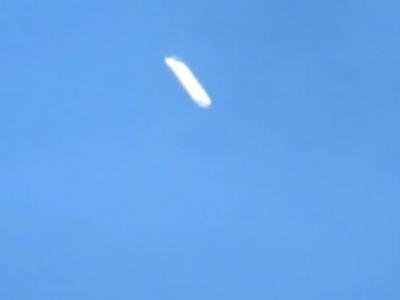Meteorites: Best Places to See Them Up Close
Young admirers pay tribute to Ahnighito, the second largest meteorite.
The meteorite that touched down in central Russia on Friday sent many people running, hoping to avoid getting hurt. Now, plenty of others will be running in search of valuable meteorite pieces, which can be filled with precious metals.
Although it can be cost prohibitive to collect them, museums and other tourist sites offer an inexpensive way to admire space rocks.
Here are five noteworthy meteorites from around the globe.
1. Hoba Meteorite
Where is it: Right where it landed, in Namibia, South Africa. It was declared a National Monument in 1955.
Specs: This is the largest single meteorite ever found and the largest slab of naturally-occurring iron ever discovered on Earth's surface. The Hoba Meteorite weighs 60 tons and measures roughly nine feet wide by nine feet long, with a depth of three feet.
Origin: The Hoba is thought to have fallen through Earth's atmosphere 80,000 years ago, but it wasn't discovered until a farmer came across it in 1920. Despite its size, the meteorite left no impact crater, which scientists are still trying to explain. Many believe that the combination of its shape and the Earth's atmosphere must have significantly decreased the speed at which it was traveling before it crash-landed.
2. El Chaco Meteorite
Where is it: After an attempt to move the rock to Germany was blocked in 2012 by Argentine citizens and scientists, El Chaco and the rest of the pieces sit comfortably in the El Chaco province in northeastern Argentina.
Specs: The El Chaco Meteorite is one of many fragments of a group of iron meteorites called Campo del Cielo. Weighing over 37 tons, it is not only the largest fragment of that group but also the second-largest single-piece meteorite. The combined weight of the fragments discovered far exceeds 60 tons, which would have allowed it to steal the Hoba's mantle of largest meteorite found on Earth.
Origin: The meteorite was believed to have landed in the northeastern part of Argentina as part of a meteor shower sometime between 4,000 and 5,000 years ago.
3. Willamette Meteorite
Where is it now: The American Natural History Museum in New York
Specs: Weighing 15.5 tons, the iron Willamette Meteorite is the largest ever found in the United States. It is also the sixth-largest in the world.
Origin: Although discovered in Oregon in 1902 by a miner named Ellis Hughes, the pitted meteorite is believed to have crashed into Earth at least a million years ago, the result of an iron-nickel core of a planet or moon shattering in a stellar collision. It is revered by an American Indian tribe known as the Clackamas Chinook, who lived in Willamette Valley prior to European settlement.
4. Ahnighito, also known as the Tent
Where is it: The American Natural History Museum in New York
Specs: Ahnighito weighs in at 31 tons and is the largest meteorite ever moved by man.
Origin: The meteorite is one fragment of the massive Cape York Meteorite that was thought to hit Earth over 10,000 years ago in an area that is now northwestern Greenland. Once belonging to the native Inuit tribe, the chunk of iron was coveted by many different people. It wasn't until 1897 when explorer Sir John Ross risked everything to take the Tent to New York. He had to manually slide the rock onto his ship, making it the ultimate battle of man vs. nature—with man coming out on top.
5. Bacubirito Meteorite
Where is it: It is currently on display at the Centro de Ciencias building in Culiacan, a city in northwestern Mexico.
Specs: The Bacubirito Meteorite weighs 24 tons—much smaller than the ones described above—but measuring 14 feet across, it is one of the longest meteorites ever found.
Origin: The meteorite was discovered in 1863 by geologist Gilbert Ellis Bailey and is considered one of Mexico's most famous tourist attractions.
National Geographic News












